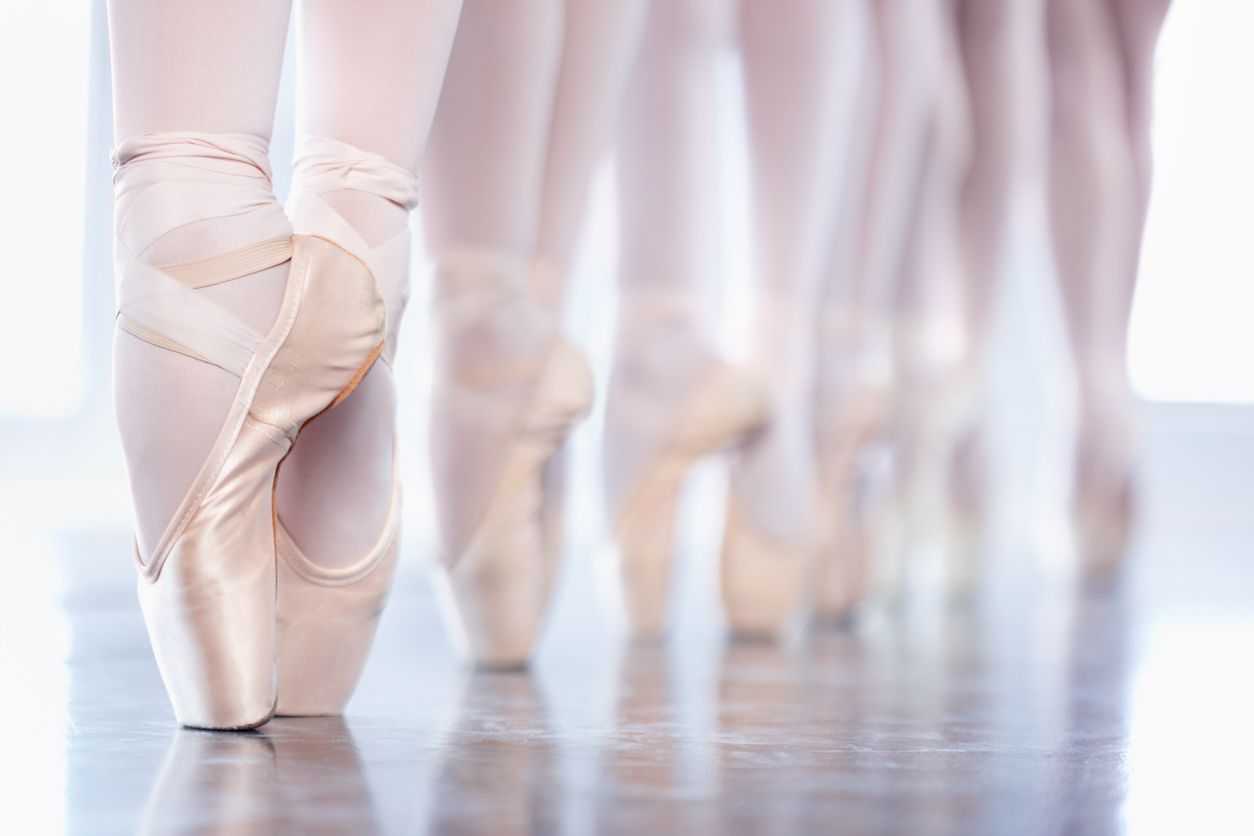As anyone at Bodythings Dancewear can affirm, young dancers typically aspire to start dancing en pointe, even as they shop for their first dancewear. But this highly technical and difficult form of ballet dance should not be attempted without proper training, appropriate physical development, high-quality pointe shoes and a qualified instructor. Otherwise, young people attempting to dance en pointe can experience serious and even permanent injuries.
What is the ideal age for starting to dance en pointe?
Dancing in pointe shoes has been widely examined by researchers for decades. These studies focus on the effects of dancing en pointe and whether the shoes measure up to the task of this beautiful but injurious art form. Young dancers are not physically ready for the biomechanical stress of being en pointe, particularly because of the stress put on their foot and big toe growth plates.
Pointe work timing is a common dilemma for teachers and parents. Age is still one of the most commonly used metrics in deciding whether a child, teen or young adult is ready for the technical effort and physical pressure. The average starting age is 11.2 years, according to researchers. However, it is not enough to consider chronological age since many young people lag behind their growth curve.
Other points to consider for determining when to start pointe training include sufficient foot strength and foot flexibility. These attributes are not fully relative to age. Wearing pointe shoes and embarking on this form of dance must involve evaluation of each individual’s development, strength and technical readiness. Starting pointe work too early can cause serious injury.

Factors in Readiness for Pointe Dance
Factors determining whether a dancer is ready for pointe dance include:
- Physical alignment and postural control
- Lower extremity strength, maintaining hip joint turnout when moving up to full pointe and revele without wobbly feet or ankles
- Lower extremity flexibility, such as in the ankles and feet achieving a full plantar flex with straight knees
- Hypermobility, with loose foot, ankle and overpointed foot joints
- Hypomobility at the ankle and foot, not require strengthening exercises for foot and ankle muscles
Reducing Injury Risk
Pointe shoe wear typically starts after three to four years of dance study. This is exciting for young dancers, but should not be a blanket approach for all members of a class or group who started at about the same time. Individuality is key to the timing of progression to en pointe dance. In just about every class, one or more students will suffer injury upon progressing to this dance style.
To reduce the risk of injury, teachers must use progressive strengthening exercises when training dancers for pointe. These exercises must include work on the feet, core and legs. It is always a good idea to start in demi-pointe shoes when moving from soft ballet flats to full pointe dance. Of course, demi-pointe shoes are not a good replacement for strengthening work.
Remember, too, that the entire body balances on your feet. This makes it particularly important to pay attention to the fit of the shoes. One of the common injuries for narrow-fitting shoes is stress reaction in the metatarsals. The metatarsals are pushed tightly together in a too-narrow shoe. This results in nerve enlargement between the toes. Shoes that are too wide or long reduce the support provided to the foot, causing the foot to slip forward. This often results in outward angulation of the big toe and bunions at the joint.
En pointe dancers should not sickle. This means they must have excellent ankle stability to reduce their risk of sprain. Sickling can also misalign the cuboid bone between the metatarsals and heel bone.
A Lisfranc sprain in the Lisfranc joint and supporting ligaments across the mid-foot can occur through improper weight-bearing. When dancing en pointe, one should never put their weight on a foot in a wing position.